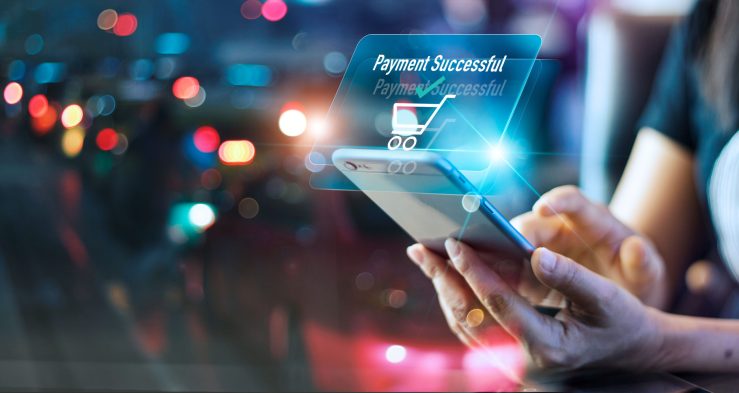Trends in Online Banking: A Technical Perspective
The banking sector has been significantly altered for good over the last ten years, making sweeping changes under the influence of the latest technologies. Once seen only as a convenience, online banking has lately replaced the financial industry, becoming its main element. As technologies continue to develop, several trends will change the future of online banking, strengthening security, user experience, and operational efficiency. According to the Consegic Business Intelligence analysis, Online Banking Market size is estimated to reach over USD 48,820.39 Million by 2031 from a value of USD 16,819.81 Million in 2023, growing at a CAGR of 14.2% from 2024 to 2031.
Read also: Online Banking Market to Reach Over USD 48,820.39 Million By 2031
Artificial Intelligence (AI) and Machine Learning (ML) are the main contributors to the detection of fraud in online banking. Traditional rule-based systems are switched to AI-powered models, through which criminal activities are intercepted in real time by analyzing huge amounts of transaction data. They use pattern recognition and anomaly detection to notify any suspicious transactions. In particular, AI models can learn the behavior of customers by tracking their expenses and then they can warn them of any transaction that is different from their routine. This early defense mechanism shortens the time during which fraudsters can damage the bank and clients’ finances. Apart from that, the machine learning algorithms keep on getting better, making them more skilled at catching complex fraud schemes.
Blockchain technology is becoming popular among informatics because of its effectiveness in improving security and transparency. Banks are already investing much of their time and the utilization of blockchain for a variety of uses, such as cross-border payments, smart contracts, and identity verification. For example, Blockchain can facilitate the cross-border currency exchange process—which otherwise would involve the intermediaries—by deleting them, hence lowering the currency settlement fees and alongside that, the acceleration of transactions.
Biometric authentication has been widely used in virtually every online financial activity and has come as a boon to users to get their cell phones unlocked in a mere second. The older and new generation of the authentication of computers, for example, passwords and PINs, are the ones that draw the fire of such issues as being susceptible to theft and difficult to use for the users. In contrast, biometrics are using a method that is safer and smoother for the user. Fingerprint scanning, facial recognition, and voice recognition are among the biometric technologies banks are adopting. These features take advantage of a person’s unique biology to confirm a user’s identity making it much more difficult for the conmen to access the accounts. Besides, the technological development of the biometric sector provides for enhanced accuracy and reliability technologies further enhancing security.
Open banking is a trend that makes it easier for people to get the financial services they need throughout the market without any is either the` unnecessary monopolists or accomplishments thanks to its greater transparency and competition. It means a bank opening up its APIs (application programming interfaces) to third-party developers, who can invent financial products and services.
Profiling is a significant trend in web banking that is associated with the recent rise in data mining and AI. The financial institutions make use of the clients’ data in creating strategies that will help bring the personalized services of a new era. AI-empowered chatbots and virtual assistants have become popular tools in the online bank market because they can communicate with customers in a more human-like fashion. They are not only one-on-one conversations like the traditional methods; they are rather improving knowledge in chatbots AI ( artificial intelligence) and virtual assistants to get what is required and exchange information like if the customer is tech savvy or not. These smarter, AI-powered programs also use natural language processing (NLP) to interact with and answer customer inquiries, hence, a more enjoyable and effective bank-like experience. Data analytics also help banks to deliver personalized product suggestions and focused marketing campaigns.
The integration of fintech solutions into conventional banking systems is a major trend as well. Also at the top are those companies that drive innovation, and create a variety of financial instruments and services that allow customers to do their banking online. Fintech companies are getting thoroughly involved in the banking industry. This bonding makes it easy for banks to provide countless services such as peer-to-peer payments, mobile wallets, and robo-advisors. These technological solutions can provide not only customers with extra convenience but also banks with the possibility to remain in a quick-moving market.
Conclusion
Venturing into the future of online banking, we can see that secure platforms are developed thanks to a plethora of technological innovations that integrate security, user experience, and operational efficiency. AI and machine learning are the future in the detection of fraud, whereas blockchain technology ensures that users are safe and transparent. Biometric authentication, open banking, and the likely incorporation of fintechs for instance are the instruments of creativity and personalization applied in the online banking industry.
Source: Consegic Business Intelligence: Online Banking Market





Leave a Reply